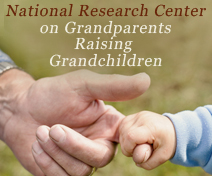ScholarWorks > Institutes & Centers > Grandparents Raising Grandchildren > GrandFamilies > Vol. 5 > Iss. 1 (2018)
Abstract
This article addresses a practice commonly known in the child welfare community as “kinship diversion,” where a child welfare agency informally places children with relatives as an alternative to foster care. While evidence predominantly shows that abused and neglected children have better outcomes when they are placed with relatives when they cannot remain safely at home, serious concerns about these children’s safety and well-being arise when the placement with relatives is informal. Indeed, it is often not understood that these same relatives can be approved as foster parents and can receive essential financial assistance and supportive services to help safely raise these children, who often have significant needs. By contrast, kinship diversion does not protect abused and neglected children from harm nor does it help stabilize the family unit financially or emotionally. As such, the safety of diverted abused and neglected children is imperiled because child protection agencies do not oversee or manage what happens to them. Using the practices of the District of Columbia child protection agency as an example of how kinship diversion is implemented by child welfare agencies nationally, this article provides recommendations for identifying and implementing best practices in this area to protect diverted children.
Recommended Citation
Spindel, M. P.,
Stekler, B. A.,
McClellan, S. R.
(2018). Kinship Diversion in the District of Columbia: A Review of Local Practice to Inform National Policy. GrandFamilies: The Contemporary Journal of Research, Practice and Policy, 5 (1).
Available at: https://scholarworks.wmich.edu/grandfamilies/vol5/iss1/4
Included in
Family, Life Course, and Society Commons, Mental Disorders Commons, Other Mental and Social Health Commons, Other Public Affairs, Public Policy and Public Administration Commons, Public Policy Commons, Social Policy Commons, Social Welfare Commons
